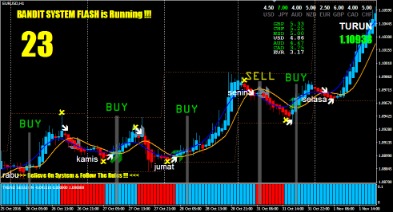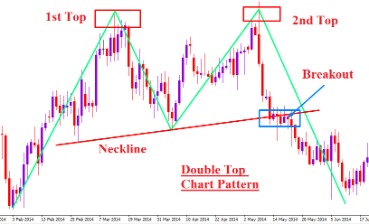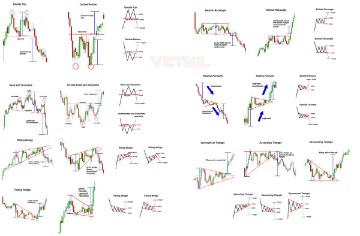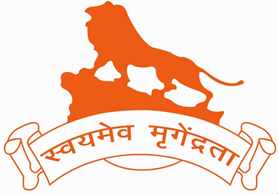dragonfly doji meaning: Dragonfly Doji: How to Spot and Trade Candlestick Patterns
Contents:
Dragonfly dojis gain significance when they are formed during the uptrend or the downtrend. The formation announces a potential reversal after a long downtrend in the stock prices, especially when the lower shadow is considerably long. Dragonfly doji means that sellers had the full control during the initial phase when the price opened and they took the price down to the lowest level. However, the buyers regained the control and pulled the prices back to the top initial level before the candlestick close.

- When the body of a Dragonfly Doji candle extends for an extended period of time, the indicator of a reversal becomes stronger.
- Formation of dragonfly doji is used to decide the potential moves in the future – like, if already holding a position, then should it be closed at a profit or loss, or should it be held on to.
- Look for signs of confirmation on trend reversal then open trade and put your stop loss on near local support/resistance.
- Moreover, when we observe this recurring pattern, we feel the buying pressure, and therefore we can position ourselves quite serenely on the purchase.
It’s important to look at the whole picture rather than relying on any single candlestick. A buy signal should be expected when the long higher shadow appears on the Gravestone Doji. When the Doji has been confirmed, the time has come to invest in it. When it comes to trading, it is always a good idea to use technical analysis as a starting point. A gravestone doji is a sign of a reversal, which could be followed by a decline in the. A gravestone pattern can be used to predict whether someone will take profits on a bullish position or enter a bearish one.
US traders welcome at these brokers:
This candlestick is often a sign that investors do not know which direction the market should take. The inability of the market to continue its downtrend reduces the bears’ negative sentiment. The behavior of the sellers indicates that some investors are liquidating their positions and selling their securities during a bull market. In contrast, in a bear market, this action by the sellers implies nothing but a continuation of the trend. Dragonfly Dojis are said to be red or green depending on the direction of their next candle.
What is a Doji candle pattern and how to trade with it? – Cointelegraph
What is a Doji candle pattern and how to trade with it?.
Posted: Mon, 12 Dec 2022 08:00:00 GMT [source]
The probability of leading to a profitable trade is very high. Between 74%-89% of retail investor accounts lose money when trading CFDs. When a dragonfly doji is confirmed in an uptrend it is considered a weak signal, or a continuation pattern as the buyers still managed to be active.
Understanding the Dragonfly Doji Candlestick
The price wasn’t dropping aggressively coming into the dragonfly, but the price still dropped and then was pushed back higher, confirming the price was likely to continue higher. Looking at the overall context, the dragonfly pattern and the confirmation candle signaled that the short-term correction was over and the uptrend was resuming. Following a downtrend, the dragonfly candlestick may signal a price rise is forthcoming.

Red is a natural pigmentation that is often paired with other colors on a dragonfly. Red dragonflies exist all over the world, but they are considered rare. It is a transitional pattern as opposed to a reversal or continuation pattern.
What happens after double doji?
A tteenna is an unusual https://g-markets.net/ that indicates the state of the economy as a whole. During an upward or downward trend, a Doji candlestick displays movement either up or down. Despite the fact that Gravestone Doji and Halo are similar in appearance, there are subtle differences between the two.
How to trade the doji candlestick pattern – FOREX.com
How to trade the doji candlestick pattern.
Posted: Wed, 16 Nov 2022 08:00:00 GMT [source]
If the candlestick right after the bullish dragonfly closes at a higher price, then the price reversal is confirmed, and the trader can make his decision. Dojis are popular reversal candlestick patterns in the financial market. They are formed when the price opens and closes at the same level in a sign of consolidation. The dragonfly is an important reversal pattern that you should consider using in your day trading.
Following a price advance, the dragonfly’s long lower shadow shows that sellers were able to take control for at least part of the period. While the price ended up closing unchanged, the increase in selling pressure during the period is a warning sign. Traders often use the Dragonfly Doji pattern as a potential signal to buy, as it indicates that the downward trend may be losing momentum and that a reversal could be on the horizon. However, it is important to note that the pattern should be used in conjunction with other technical analysis tools and indicators to confirm the potential reversal and to make informed trading decisions.
As we mentioned before, dragonfly doji meaning doji candlestick is rare on charts. Dragonfly doji candlestick has different meaning during uptrend or downtrend. We discuss it below to help you interpret it better during a trend. The strict requirement for the same open, high and closing price makes this a rare signal in technical analysis. However, the additional requirement of some substantial downward momentum throughout the day is open to some interpretation. A dragonfly doji is one of the less common signals in technical analysis, so it is rarely open to a great deal of interpretation when identified.
What is the difference between dragonfly doji and hanging man candle?
The best strategy to trade it and examples of how they have played out in the past. The content on this website is provided for informational purposes only and isn’t intended to constitute professional financial advice. Commodity.com is not liable for any damages arising out of the use of its contents. Commodity.com makes no warranty that its content will be accurate, timely, useful, or reliable.

As shown below, the dragonfly doji has a similar appearance to the hammer pattern or capital letter T. In this article, we will look at the dragonfly doji, which is another popular type of the pattern. A Dragonfly Doji signals that the price opened at the high of the session.
Graphically this translates to the long wick under the body of the candlestick. Dragonfly Doji indicate that there may be an imminent change in market sentiment or some sort of reversal from bullishness to bearishness happening soon. The Dragonfly pattern acts as a warning sign to other traders. The dragonfly doji is a solid trend reversal pattern that certainly should be part of your trading toolbox. The gravestone looks like an upside-down “T” and it has the same reversal properties as the dragonfly. It has an opposite look to the dragon fly pattern because it is formed when the open, close and low prices are equal and there is a long high wick.
The close near the day’s open suggests that demand is again starting to outweigh supply. The daily chart shows a dragonfly doji at the end of an uptrend. The long lower shadow would suggest a bullish move according to some authors on candlesticks. However, when the opening and closing prices match, it speaks of indecision. The Dragonfly Doji is typically interpreted as a bullish reversal candlestick chart pattern that mainly occurs at the bottom of downtrends. The Dragonfly Doji is a Candlestick pattern that can help traders see where support and demand are located.
The dragonfly doji is a signal of a potential reversal in security price with the open, close, and high prices virtually the same. Counterattack lines are two-candle reversal patterns that appear on candlestick charts. The dragonfly doji is an interesting name for a candle that is supposed to act as a bullish reversal. If you see a dragonfly doji in the bush, do not be frightened.
- The long upper shadow indicates that the bear market reversed the bullish advance made at the start of the session.
- Candlestick trading is a part of technical analysis and success rate may vary depending upon the type of stock selected and the overall market conditions.
- You can see the open and the close is the same level, this is why you see a straight line on the chart.
- Successful traders will typically wait until the following day to verify the possibility of an uptrend after a Dragonfly.
Therefore, the candlestick closed with a long lower shadow, and had open, high and close at the same level. When it forms at the bottom of a downtrend, the dragonfly doji is considered a reliable indication of a trend reversal. This is because the price hit a support level during the trading day, hinting that sellers no longer outnumber buyers in the market.
Mastering their interpretation and knowing how to implement the info into your trading sessions is vital for your trading success. It’s a Japanese candlestick pattern mostly known to day trading currency traders. It is repeated quite often on financial charts, so it is possible to see a trading signal and an investment opportunity.
Following a downward trend, a dragonfly doji indicates a potential price increase if the confirmation candlestick moves up. This pattern tends to form at the peak of an upward trend and signals that the market may change its direction. The dragonfly Doji also suggests a high level of indecision from both sellers and buyers.
